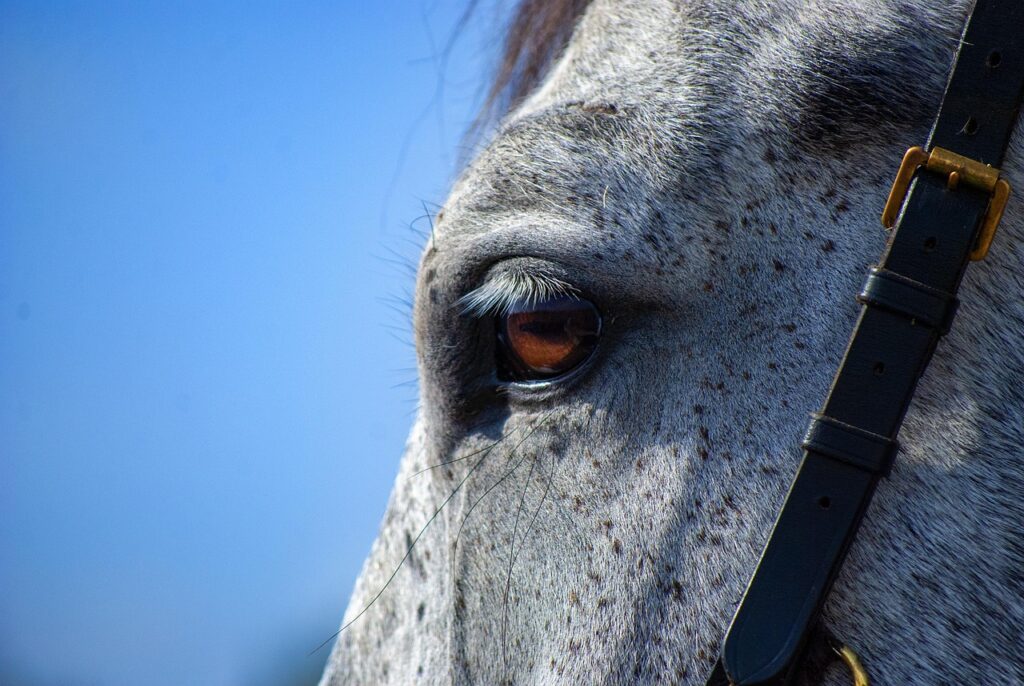If you own a horse or two, then you know how significant the responsibilities are. Providing them a safe and comfy shelter is just one of them.
A well-designed barn is essential for maintaining the health and happiness of horses. It also can make life easier for those who care for them. Metal barns have become increasingly popular among horse owners because of their durability, flexibility, and cost-effectiveness. These structures offer protection from the elements while allowing for a wide range of customizations to suit specific needs.
Designing the perfect metal barn setup for horses requires careful thought about factors such as stall size, ventilation, storage, and accessibility. With the right setup, a metal barn can serve as a haven for horses and a highly efficient workspace for their owners. This article will explore the best metal barn layouts, features, and tips to help horse owners create an ideal environment for their animals.
Essential Features in a Metal Barn for Horses
Several key features must be included in any metal barn intended for horses. Stalls should be spacious enough for horses to move comfortably. Experts recommend stalls measuring at least twelve feet by twelve feet for average-sized horses. Larger breeds may require even more space.
Good ventilation is another critical element. Fresh air flow helps prevent respiratory issues and keeps the barn environment comfortable during hot and cold seasons. Windows, ridge vents, and strategically placed doors all contribute to a well-ventilated barn.
Safe and durable materials are non-negotiable. Stall partitions, walls, and gates should be made from smooth, strong materials that will not splinter, rust, or easily break under pressure. The flooring must also provide adequate traction to prevent slips and falls.
Convenience features, such as tack rooms, feed storage areas, and wash stalls, greatly enhance the functionality of a metal barn. Including these spaces helps streamline daily routines and keeps supplies organized and within easy reach.
Popular Layout Designs for Metal Horse Barns
The layout of a metal horse barn plays a crucial role in its efficiency and comfort. Several popular designs cater to different needs and preferences.
A center aisle barn, sometimes called a breezeway barn, features two rows of stalls facing each other across a central aisle. This design provides excellent airflow and easy access to each stall. Owners appreciate being able to monitor multiple horses at once from the central corridor.
A shed row barn arranges stalls in a single line, all facing outward. This design is ideal for warmer climates where maximum air circulation is essential. It also makes it easy for horses to see outside, which can be comforting.
An L-shaped or U-shaped barn configuration adds sheltered outdoor space in the center. This layout provides a protected area for grooming, saddling, or socializing horses out of direct sun and rain. It also allows for additional storage and work areas around the periphery.
Each of these layouts can be customized further to suit the specific needs of the horse owner and the property.
Stall Setup and Design Tips
A well-designed stall promotes the health and comfort of the horse. In addition to size considerations, stall floors should be carefully planned. Many horse owners opt for packed dirt or crushed stone topped with rubber mats. This combination provides good drainage and cushioning for horses’ legs.
Stall walls should be high enough to prevent horses from attempting to jump over but should also allow for visibility. Horses are social animals and often feel more secure when they can see their stablemates. Half-solid and half-grilled partitions are a common choice.
Feeders and waterers should be mounted securely to prevent tipping and placed at appropriate heights to encourage natural eating and drinking positions. Automatic waterers can be a convenient addition, ensuring that horses have constant access to clean water.
Doors must open smoothly and safely. Sliding doors are popular because they save space and reduce the risk of accidents in tight aisles.
Tack and Feed Room Considerations
Incorporating tack and feed rooms into the barn design helps maintain organization and efficiency. A well-planned tack room should be dry, secure, and large enough to store saddles, bridles, grooming tools, and other equipment. Installing saddle racks, bridle hooks, and shelving keeps everything orderly and easily accessible.
A feed room should be rodent-proof and moisture-resistant to protect valuable feed supplies. Airtight containers are often used to store grains and supplements. Installing sturdy shelving or bins for organizing feed products simplifies the daily feeding routine.
Positioning the tack and feed rooms conveniently close to the stalls saves time and reduces unnecessary movement throughout the barn.
Wash Stall Setup
A wash stall provides a designated space for bathing horses and performing grooming tasks. In a metal barn, a wash stall should be equipped with proper drainage, non-slip flooring, and access to hot and cold water.
Installing cross ties helps secure the horse safely during washing. Wall-mounted hooks for hanging hoses, sponges, and towels keep the area tidy and prevent tripping hazards.
An overhead cover protects horses and handlers from sun and rain during grooming sessions. Many owners also install radiant heaters or infrared lamps to help dry horses quickly during colder months.
Turnout and Paddock Integration
No barn setup is complete without considering turnout space. Regular turnout is essential for horses’ physical and mental well-being. Integrating paddocks directly with the barn allows for easy movement between stalls and outdoor spaces.
Paddocks should have secure fencing made of safe, durable materials such as vinyl, wood, or mesh wire. Gates should be wide enough to allow machinery such as tractors or mowers to pass through for maintenance.
Rotating turnout areas and providing shelters within paddocks extends the usability of these spaces throughout the year and prevents overgrazing.
Customization Options for Metal Barns
Metal barns offer a wealth of customization options to meet the unique needs of horse owners. Insulation can be added to walls and ceilings to regulate temperature and reduce noise. Insulated barns are especially beneficial in regions with extreme heat or cold.
Adding skylights or translucent panels to the roof enhances natural lighting, reducing electricity costs and creating a more pleasant environment.
Cupolas and weather vanes not only add aesthetic charm but also improve ventilation. Decorative elements such as custom colors, trim, and wainscoting allow owners to match the barn to existing property styles.
Interior design can include specialized flooring in aisles, decorative lighting fixtures, and custom stall fronts, creating a barn that is as attractive as it is functional.
Benefits of Choosing a Metal Barn for Horses
Metal barns offer many advantages over traditional wood structures. Their resistance to fire, pests, and rot greatly increases safety and reduces maintenance costs.
Metal barns are known for their strength and ability to withstand harsh weather conditions such as heavy snow, strong winds, and intense sunlight. This durability ensures a longer lifespan and a better return on investment.
Pre-engineered metal barns allow for faster construction timelines compared to traditional building methods. This means horse owners can have their facilities up and running sooner.
Metal barns are also highly adaptable. If your horse operation grows or changes, expansions and modifications can be made more easily than with other building types.
Common Mistakes to Avoid in Metal Barn Setup
Proper planning is essential to avoid mistakes that could compromise the safety and functionality of a horse barn. Underestimating the size requirements for stalls, aisles, and storage areas often leads to cramped conditions and frustrated workflows.
Neglecting ventilation can result in poor air quality, leading to respiratory problems for horses. Every barn should have a well-thought-out ventilation system that operates effectively in all seasons.
Inadequate drainage around the barn site can cause serious problems, from muddy paddocks to flooded interiors. Planning proper grading and installing drainage systems prevents these issues.
Choosing cheaper, less durable materials to save money upfront often leads to higher maintenance costs and safety risks down the road. Investing in high-quality construction and finishes ensures long-term satisfaction.
Planning for Future Expansion
Even if your current needs are modest, it is wise to plan for future growth when designing a metal horse barn. Adding a few extra stalls, storage areas, or a second tack room can accommodate additional horses or expanding activities.
Selecting a barn design that can be easily expanded, such as a modular system or a structure with clear-span interiors, allows for smoother transitions as needs change.
Preparing utility systems such as electrical and plumbing with potential expansion in mind also saves time and expense later on.
Cost Considerations
Budgeting for a metal horse barn involves more than just the initial construction costs. Site preparation, permits, foundation work, utilities, and interior fittings all contribute to the overall investment.
Metal barns typically offer lower lifetime maintenance costs compared to wood structures, balancing out the initial expense. Choosing quality materials and reputable builders ensures that the barn will require fewer repairs and upgrades over time.
Exploring financing options and seeking bids from multiple providers can help find the best value without sacrificing quality.
Maintaining a Metal Horse Barn
Ongoing maintenance keeps a metal barn looking great and functioning properly. Routine inspections for loose fasteners, leaks, rust, and other minor issues allow for quick repairs before problems escalate.
Cleaning stalls, aisles, and tack rooms regularly prevents the buildup of dirt, dust, and odors. Checking and maintaining ventilation systems ensures that air quality remains high throughout the year.
Touching up scratched or chipped paint prevents rust and maintains the barn’s appearance. Keeping gutters and drainage systems clear protects the foundation and prevents water damage.
Consistent care preserves the safety and value of a metal barn investment.
Conclusion
Metal barns offer horse owners a highly durable, customizable, and cost-effective solution for sheltering their animals. With thoughtful design and attention to essential features like stall size, ventilation, storage, and convenience, a metal barn can become a beloved centerpiece of any equine property.
The versatility of metal barns allows for creative layouts and personalized features that make daily care routines easier and more enjoyable. Avoiding common pitfalls and planning for future expansion ensures that the barn will continue to meet the needs of both horses and owners for many years.
Investing time and resources into creating the best possible metal barn setup rewards horse owners with peace of mind, knowing their horses are safe, comfortable, and well cared for every day.

